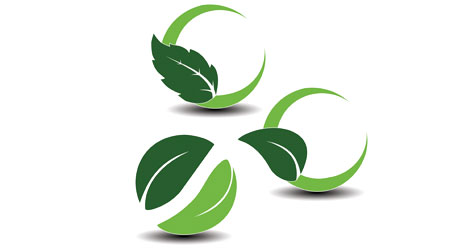4 Questions Help Facility Managers Select Green Products
More an art than science, selecting green products can be tricky. Consider these criteria in your green product standards.
By Greg Zimmerman, Executive Editor
It’s dependable advice: Create green product standards based on the overall priorities of the organization. If your organization is concerned about its carbon footprint, create standards that prize products with low embodied energy, choose manufacturers that have taken steps to reduce their own greenhouse gas emissions, and consider local products that don’t need to be shipped or trucked long distances. If the organization prioritizes the health and wellness of its occupants, choose products absolutely free of neurotoxicants and known carcinogens. And if it’s important to an organization to be a good neighbor and citizen of its city, select products that mitigate the urban heat island effect and reduce light pollution.
But how do you develop these criteria for your product standards in order to best choose the products that contribute to an organization’s environmental philosophy? There are more products available than ever before, and more resources available to make informed decisions on green products. This is true for product categories ranging from HVAC systems to roofing, from windows and walls to paints and coatings. So how do you wade in? How do you create a “decision matrix” that helps narrow a seemingly infinite number of choices and criteria to the one product from the one manufacturer that is best for your particular buildings and adds value to your organization? Here are four questions to ask that can help you look at products objectively, and start thinking about how to tailor your green product standards to the priorities of your organization.
1. How long will it last?
This is simple: Products purported to be sustainable, by definition, must last longer than their traditional counterparts.
“Durability is a significant issue in determining the sustainability of a product,” says Howard Williams, founder and president of Howard Williams Consulting. “Products and materials of lesser utility and life-use are simply wasting finite resources.”
Here’s an example to illustrate why selecting products based on durability must be part of any strategy to select overall sustainable products: Say the average lifespan of a commercial building is 75 years (various trade groups put the life of a building anywhere between 50 and 120 years). But according to the National Roofing Contractors Association, the average roof lasts only 15 years. That means over the course of a building’s life, you’ll be replacing the roof five times, on average. But if you pick a more durable roof that lasts twice that long, you’ve reduced your re-roofing projects by half over the life of the building.
Often, choices weighing products known to last longer versus shorter-lived products come down to a question of cost. How much of a premium are you willing to pay for several additional years of use or operation? A decade? A quarter century? Williams suggests putting specific requirements for performance versus first cost premium in your decision matrix. “That way, you’ll easily understand how to make decisions on how much a first-cost premium is worth it for better performance, durability, and sustainability.”
2. Does it help meet other green goals?
Earlier this year, both the U.S. Green Building Council and the International WELL Building Institute updated their respective green building standards (LEED and WELL). If your building has been certified by either of these standards, or a certification may be in future plans, selecting products that help meet the requirements of these rating systems should be the goal.
LEED v4.1 includes a new “building materials” section that gives points for selecting sustainable products that meet any of a range of criteria, from the availability of a Health Product Declaration (HPD) for the product to meeting green certifications, like Cradle to Cradle.
WELL v2, a standard devoted to making buildings healthier and more occupant-friendly by focusing on health and wellness, asks or requires you to employ a variety of product selection-related strategies. Prerequisites in WELL include selecting products with no asbestos, lead, or mercury. WELL credits also include points for reducing heavy metals in products, reducing or eliminating volatile organic compounds, and selecting products for which the manufacturer has been transparent about its ingredients.
3. How transparent is the manufacturer about this product?
Even if a green building certification isn’t in the offing, understanding the “ingredients” of a product should always be a high priority. In recent years, partly due to the rating systems offering credits for transparency, it’s become easier than ever to find out what materials are used in a product’s manufacturing process. More manufacturers have spent the time and expense to develop Environmental Product Declarations (EPDs) and HPDs for their products.
“EPDs and HPDs are ‘proof of concept,’” says William Paddock, co-founder and managing director of WAP Sustainability. “They communicate the life-cycle assessment in a standardized form. It’s important to include EPDs in your product specifications.”
The product’s environmental life-cycle assessment shows, among other things, what is in a product and the cost to the environment required to make it.
“If you ask for an EPD, you’ll be sending a signal to manufacturers that you, the customer, place importance on their environmental stewardship,” says Williams. But it’s important, also, for facility managers to help product manufacturers understand why they’re asking for this data, and how they’re using it as a facet of product selection. The communication must be two-way, says Williams.
4. How can green products really push the envelope?
Because many organizations use sustainability as a statement about what is important to them as a way to recruit and retain the best talent, selecting products that conform to the cutting edge of green standards can be advantageous. As the green building product market has matured, more and more resources are available to provide guidance on how to really push the envelope on sustainability.
Take, for instance, Mindful Materials, a platform founded by architecture firm HKS and developed by a cadre of large architecture firms and sustainability consultants. Mindful Materials aims to aggregate information about the “human health and environmental impacts” of products to give users a platform to make more informed product decisions. It’s not a certification, it’s simply a free cloud-based database of information about products vetted by “experts passionate about making it easier to make informed product choices.” Using that information, and databases like it, can give you a clearer, clutter-free idea of what green products are most recommended, and how they can help match your organization’s priorities.
“These product decisions can be complex,” says Williams. “But being able to look over your peers’ shoulders is marvelously important.”
Email comments and questions to greg.zimmerman@tradepress.com.
Related Topics:












